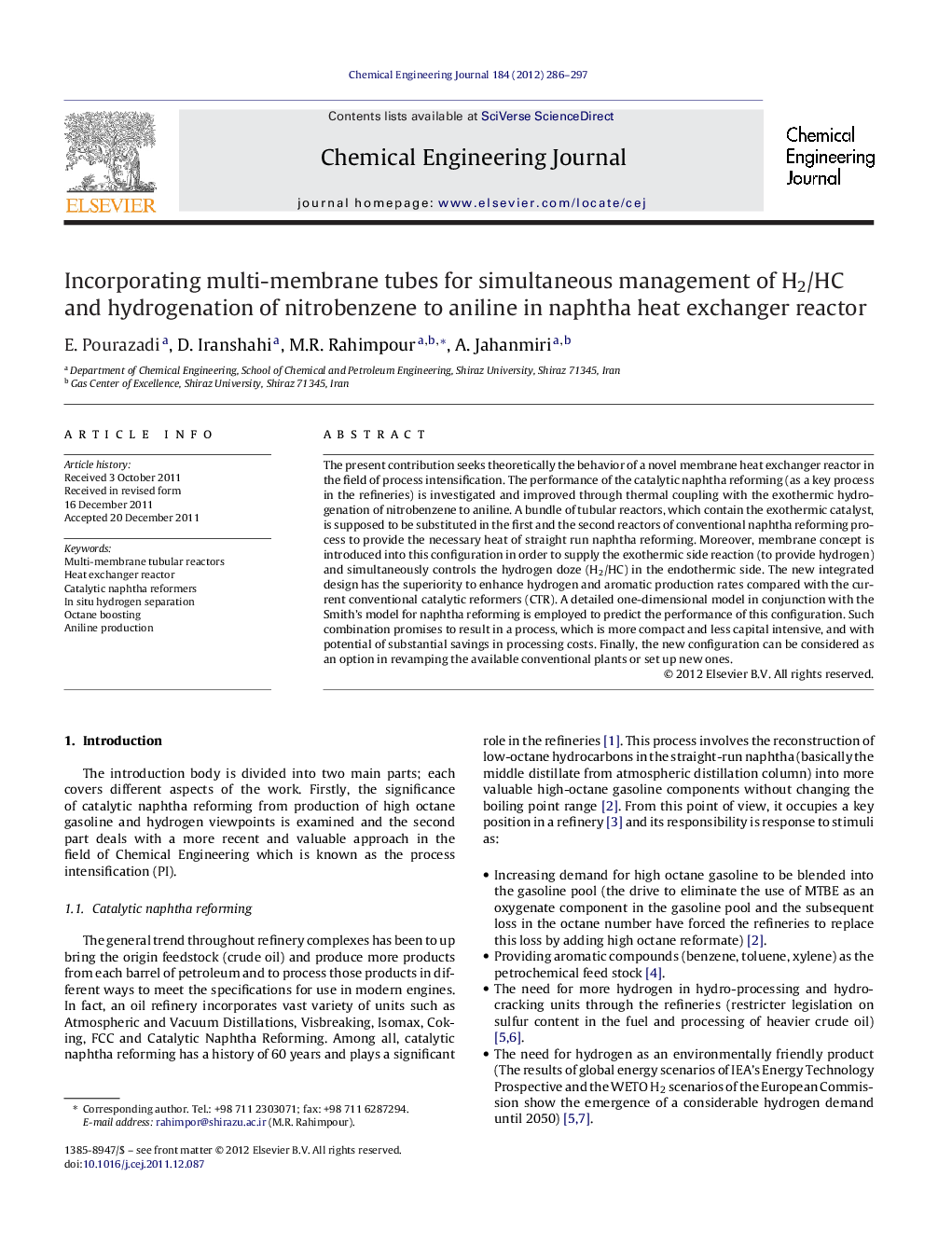| Article ID | Journal | Published Year | Pages | File Type |
|---|---|---|---|---|
| 150118 | Chemical Engineering Journal | 2012 | 12 Pages |
The present contribution seeks theoretically the behavior of a novel membrane heat exchanger reactor in the field of process intensification. The performance of the catalytic naphtha reforming (as a key process in the refineries) is investigated and improved through thermal coupling with the exothermic hydrogenation of nitrobenzene to aniline. A bundle of tubular reactors, which contain the exothermic catalyst, is supposed to be substituted in the first and the second reactors of conventional naphtha reforming process to provide the necessary heat of straight run naphtha reforming. Moreover, membrane concept is introduced into this configuration in order to supply the exothermic side reaction (to provide hydrogen) and simultaneously controls the hydrogen doze (H2/HC) in the endothermic side. The new integrated design has the superiority to enhance hydrogen and aromatic production rates compared with the current conventional catalytic reformers (CTR). A detailed one-dimensional model in conjunction with the Smith's model for naphtha reforming is employed to predict the performance of this configuration. Such combination promises to result in a process, which is more compact and less capital intensive, and with potential of substantial savings in processing costs. Finally, the new configuration can be considered as an option in revamping the available conventional plants or set up new ones.
► Direct hydrogen usage. ► Plant size reduction. ► Higher aromatic and hydrogen production. ► Simultaneous gasoline and aniline production.
